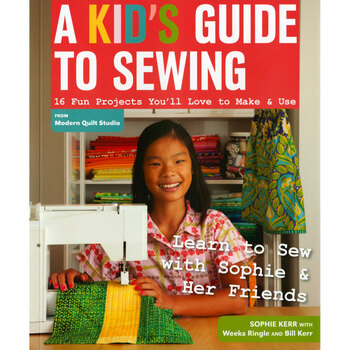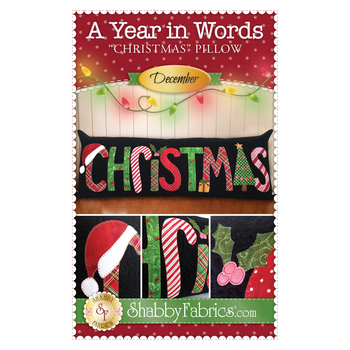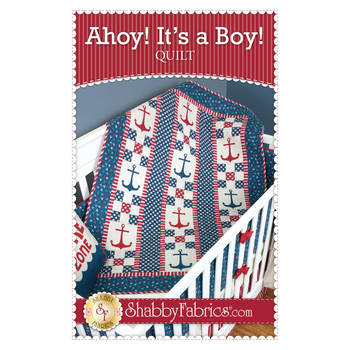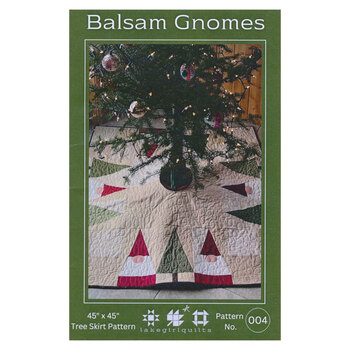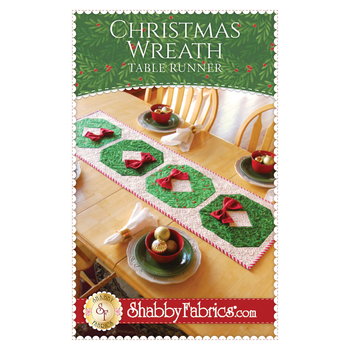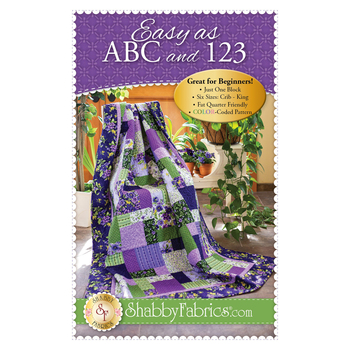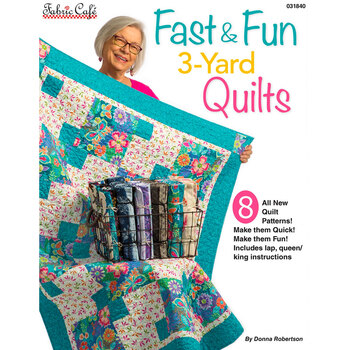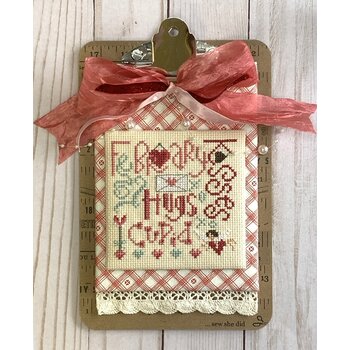Beginner Friendly Patterns

"Be" Bowl Filler Pattern
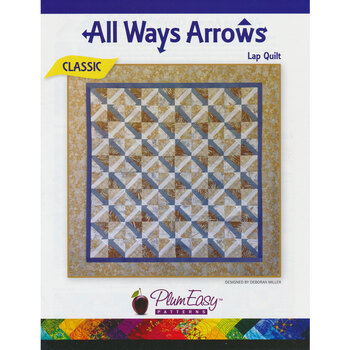
- sale
All Ways Arrows Lap Quilt Pattern

- sale
Baker's Dozen Pattern

Balsam Gnomes Quilt Pattern
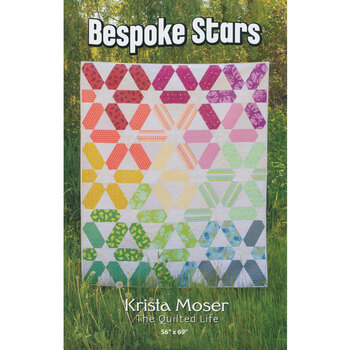
- sale
Bespoke Stars Pattern
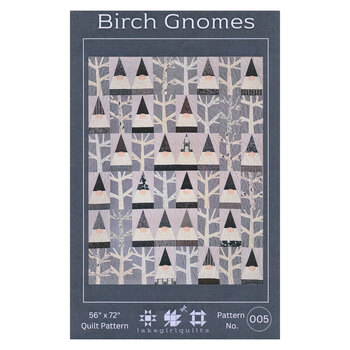
Birch Gnomes Quilt Pattern

Brides Dream Pattern

Bubble Quilt Pattern

Carnival Quilt Pattern

- sale
Chalk It Up! Series - July Pattern

Charm Squares Apron Pattern

Christmas Quilting Book

Confetti Stars Pattern
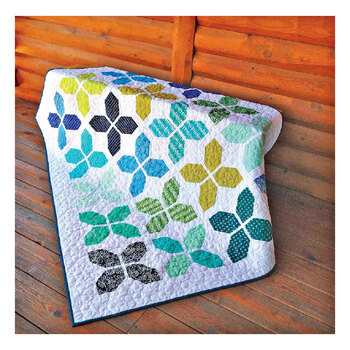
County Fair Pattern

Cupcake Placemat Pattern

- sale
December Typography Cross Stitch Pattern

Diamond Garden Pattern

Double Strip Trip Pattern

Dry Ideas Pattern

Easy Does It Patriotic Book

Easy as ABC and 123 Pattern

Evergreen Pattern

Every Bunny Welcome Pattern
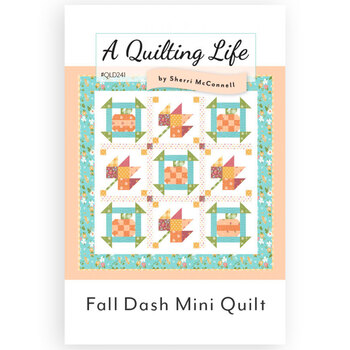
Fall Dash Mini Quilt Pattern
Shabby Fabrics has a wealth of resources and tips for the new quilter. Create your very first quilt with the help of beginner quilt patterns. These patterns are simple, yet beautiful, and will enable you to complete your very first quilt. Give it as a gift or treasure it as a family heirloom. There is a full range of beginner friendly patterns available. Choose florals, classic patterns, holiday quilts, and other options that will make accomplishing your first or second quilt a manageable and achievable goal.
Frequently Asked Questions About Beginner Friendly Patterns
There are many different types of quilting patterns and designs, including traditional patterns like the Log Cabin, Nine-Patch, and Double Wedding Ring, English Paper Piecing, applique, piecing as well as modern patterns and designs.
Quilting notions are the tools and supplies you use to create a quilt. These can include rotary cutters, rulers, mats, pins, marking tools, marking pens and other basic sewing items.
To get started with quilting, you will need fabric, a rotary cutter, a cutting mat, quilting rulers, quilting pins, a sewing machine, and thread.
The best project to begin with to learn how to quilt is a quilt block. There are many ways to use a quilt block in a project when you're finished; You can make a pillow, wall hanging, or make more to stitch together into a larger quilt. The possibilities are limited only by your imagination! We recommend using a pattern to start but there are lots of ways for you to add your own personal touches. Be sure to check out our Learn to Quilt video series to follow along with Jen as she walks you through making your very first quilt with helpful tutorials, tips, and tricks!
A quarter yard is cut perpendicular to the selvege, all the way across the fabric. It measures approximately 9" x 43".
A fat quarter is a half yard (measuring approximately 18" x 43") cut in half resulting in a wider, shorter rectangle measuring approximately 18" x 21".
Width of Fabric. The width of fabric is the entire length from selvege to selvege. Most fabric widths are between 42" and 45".
To measure and cut fabric for quilting, you should use quilting rulers and a rotary cutter. It is important to ensure that your fabric is square and that your cuts are accurate. Our preferred brand of rulers is Creative Grids.
To assemble a quilt top, you will need to sew together the quilt blocks or squares. This can be done using a sewing machine or by hand.
To quilt the layers of a quilt together, you will need to sew through the top, batting, and backing of the quilt. This can be done using a sewing machine or by hand.
To bind a quilt, you will need to sew a strip of fabric around the edges of the quilt. This can be done by machine or by hand. The most common width of strips are 2-1/4" or 2-1/2" strips.
This generally starts with a pattern so that you can see how much fabric is required, and what the finished design will look like, so you can choose the fabric colors you want to be reflected in the quilt. Using a pattern will also help organize which quilting notions will be most helpful to you.



